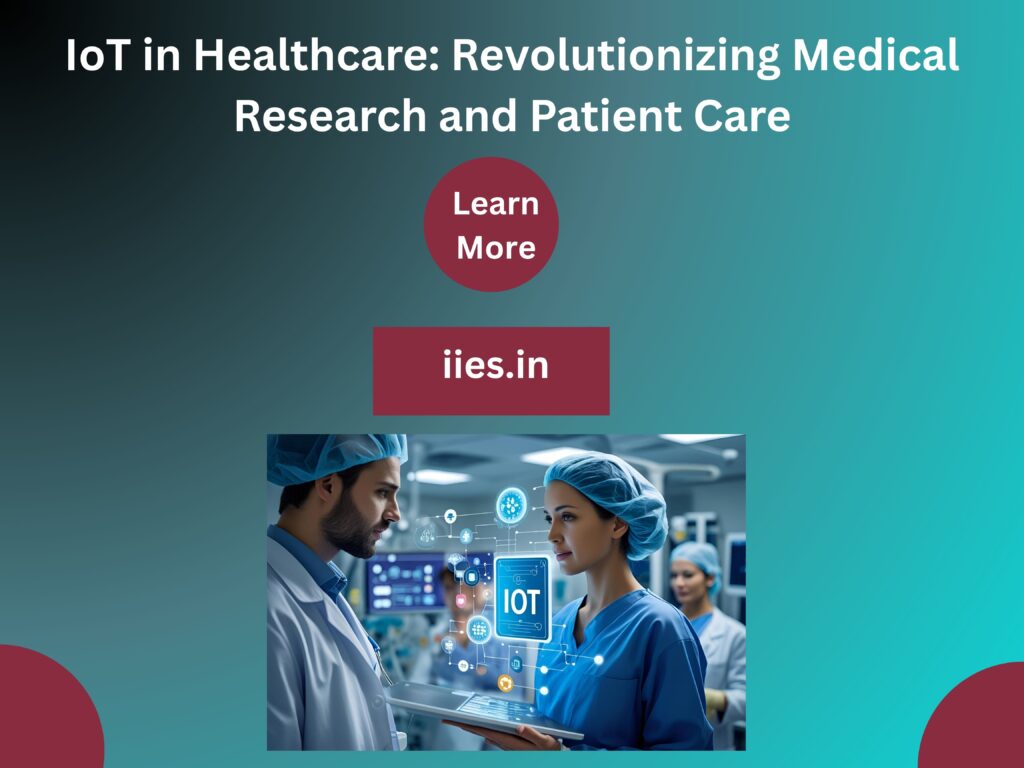1.IOT integration in health care systems makes it possible for:
- Monitoring health in real-time
- Early diagnosis of important illnesses
- Improves medical research by gathering a lot of data
- Lower hospital and patient expenses
- Support for the management of aging populations and chronic illnesses
2.Internet of Things Applications in Healthcare (Detailed View)
What It Is: Constantly tracking a patient’s medical information outside of a therapeutic setting.
Examples:
A smartwatch worn by a heart patient notifies a physician if abnormal beats are identified.
A patient with diabetes who uses a continuous glucose monitor to report blood sugar readings to their doctor and an app
Impact:
Reduced hospitalizations Improved management of long-term conditions
Make home-based care possible
2.2. Intelligent Medical Equipment
What It Is: Gadgets with sensors built in that collect information and connect to smartphone apps or medical systems.
Examples:
Intelligent insulin pumps that automatically modify dosage in response to glucose levels.
AI-powered MRI scanners that identify
abnormalities more quickly than using conventional techniques.
Impact:
Reduced human error Increased precision in diagnosis and therapy Equipment predictive maintenance
2.3. Hospital Asset Tracking:
This method uses RFID tags and Internet of Things sensors to track the whereabouts and condition of medical supplies and equipment.
Examples: Tracking defibrillators or wheelchairs in real time Monitoring vaccine refrigerator temperatures Impact: Decreased misplacement or loss of equipment Enhanced effectiveness of operations quicker reaction times in case of emergency
2.4. Management of Medication
What It Is: Making certain that patients take the appropriate drug at the proper time.
Examples:
Smart pillboxes that alert caretakers and patients about missed doses. Applications for smartphones that track drug intake and notify physicians of non-compliance
Impact:
Improved adherence to medicines Decreased hospital read missions and problems Increased autonomy for senior citizens
2.5. Monitoring of the Environment
What It Is:
Keeping an eye on environmental conditions to keep safety standards high and prevent diseases. Examples: Sensors that measure operating room air quality. Keeping an eye on the humidity and temperature when storing delicate drugs
Impact:
Fewer illnesses developed in hospitals adherence to legal requirements safer surroundings for employees and patients
2.6. Integration of Telemedicine
What It Is:
Using telemedicine and the Internet of Things to provide more comprehensive virtual consultations
Examples:
During a virtual visit, live vital signs are streamed via a patient’s wearable gadget. During video chats, cardiac patients can have their ECGs remotely monitored.
Impact:
Improves the standard of virtual care and expands access for patients who live in remote areas or have limited mobility.
Reduces the need for face-to-face interactions
3.Expanded Advantages of IOT in Healthcare
3.1. Better Results for Patients
Timely intervention is made possible by early detection via IOT. For instance, by initiating early treatment regimens, the detection of sepsis with continuous vitals monitoring can save lives.
3.2. Effectiveness of Operations
Clinicians can concentrate more on patient care by automating processes like nurse alerts, equipment tracking, and patient check-ins.
3.3. Lowering Expenses
Healthcare spending is greatly lowered via preventive care and fewer hospital admissions due to remote monitoring.
3.4. Improved Interaction with Patients
Patients who use health apps or fitness trackers are more conscious of their health, which promotes healthier lifestyle choices and the prevention of disease. 3.5. Quicker Research Researchers can get important insights into illness patterns, treatment effectiveness, and population health trends by analyzing aggregated anonymize data from thousands of patients.
4.Difficulties and Things to Think About (With Technical Details)
4.1. Privacy and Data Security
IOT technologies produce a lot of private information. This data can be intercepted or altered in the absence of appropriate protection (such as encryption and secure APIs). Strong protections are mandated by HIPAA and GDPR, such as • Secure data storage and transport;
- End-to-end encryption
- Audit trails, and access controls
4.2. Compatibility
Since many gadgets run on proprietary systems, integration is challenging. The development of standards such as HL7 FHIR aims to enhance data exchange across systems. 4.3. Dependability of the Device In situations where life is at stake, misleading readings or device outages caused by battery failure, software faults, or sensor drift in IoT devices are unacceptable. Mitigation Techniques: Regular firmware updates; self-checking diagnostics; redundancy 4.4. The ability to scale Thousands of devices may need to be supported by healthcare networks. Strong network security, device management at scale, and high-bandwidth data transport are all requirements for IT infrastructure.
5.Prospects for the Future
It is anticipated that the IoT’s integration of AI and Big Data will unleash potent capabilities: AI-driven diagnostics employing real-time patient data; predictive analytic for disease outbreaks; and patient digital twins for treatment simulations IoT data transmission latency will be significantly decreased by technologies like 5G, allowing for real-time surgical help or emergency care coordination.
6.Final thoughts
Healthcare is changing from reactive to proactive thanks to IOT. IoT contributes to the delivery of more precise, rapid, and individualized care by facilitating data-rich research environments, intelligent interventions, and ongoing monitoring. With concerted efforts by regulators, engineers, and healthcare providers, the major issues of security, interoperability and scalability can be resolved. If you’re passionate about mastering advanced C++ concepts and real-world programming skills, the Indian Institute of Embedded Systems (IIES) offers top-notch education and hands-on training in embedded systems. With its expert faculty and industry-aligned curriculum, IIES is an excellent destination for students aiming to build a strong career in embedded technologies.

